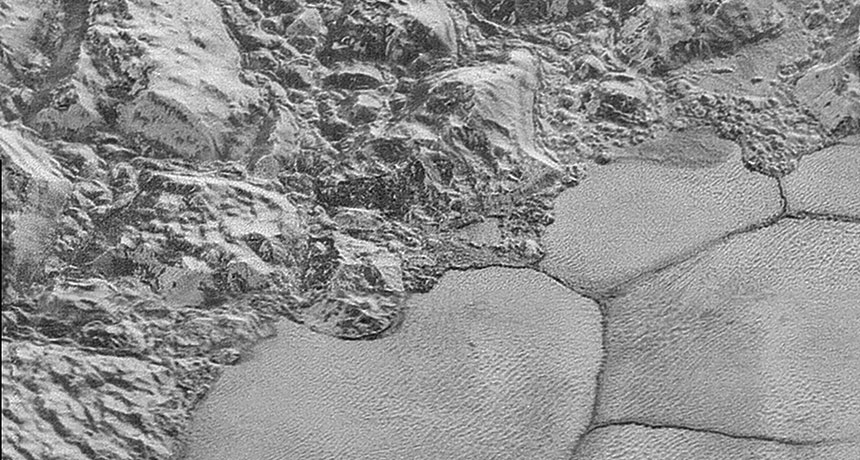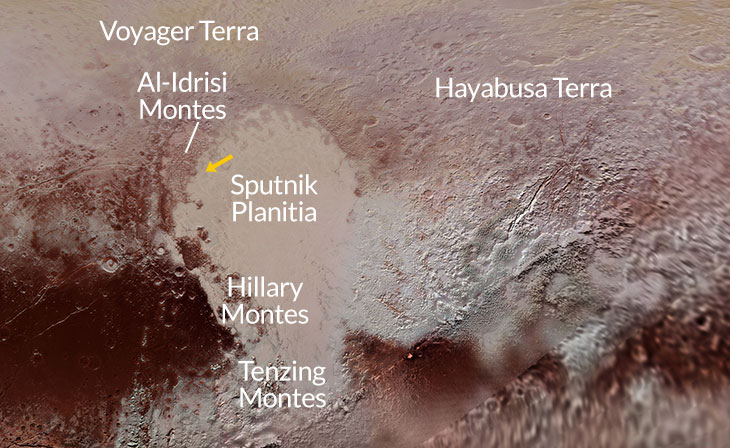Never-before-seen dunes on Pluto spotted in New Horizons images
Wind and a process called sublimation helped sculpt the ripples, a new study suggests

BLOWING IN THE WIND This image from the New Horizons spacecraft’s 2015 flyby of Pluto shows dunes (center bottom and right) along a mountain range. The ripples are made of sand-sized grains of methane ice, researchers say.
SWRI, JHU Applied Physics Lab, NASA








